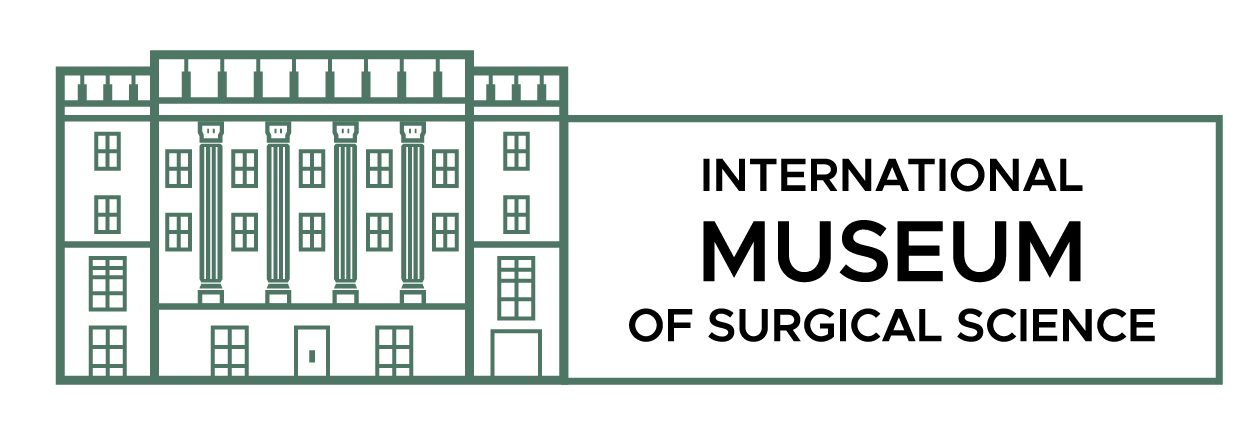Published by Michelle Rinard
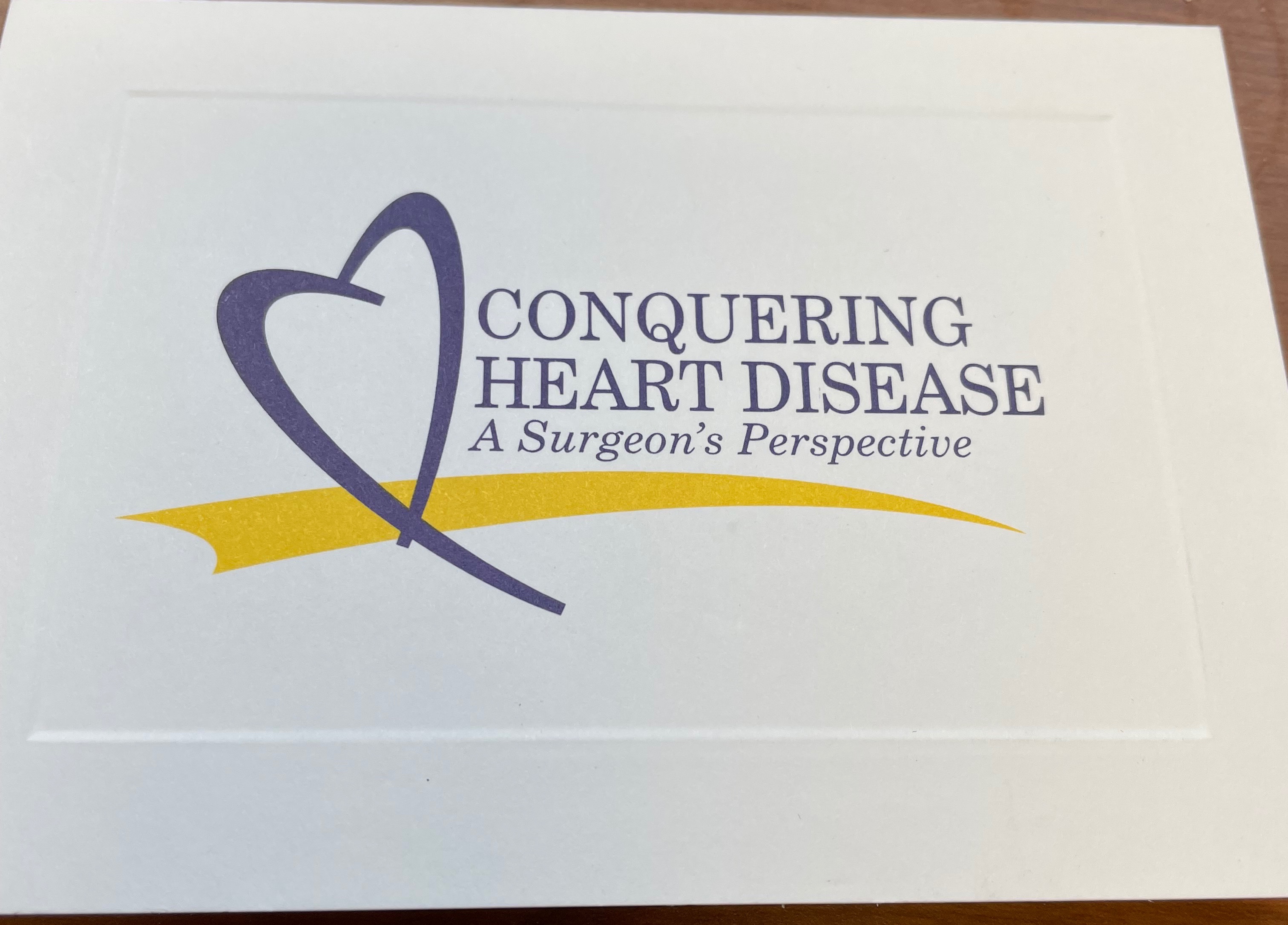

Invitation to Conquering Heart Disease (front and back)
Conquering Heart Disease: A Surgeon’s Perspective, opened at the International Museum of Surgical Science in 2001. The exhibit was organized by Dr. Sibu Saha, MD, the Medical Director of the Baptist Heart Institute.
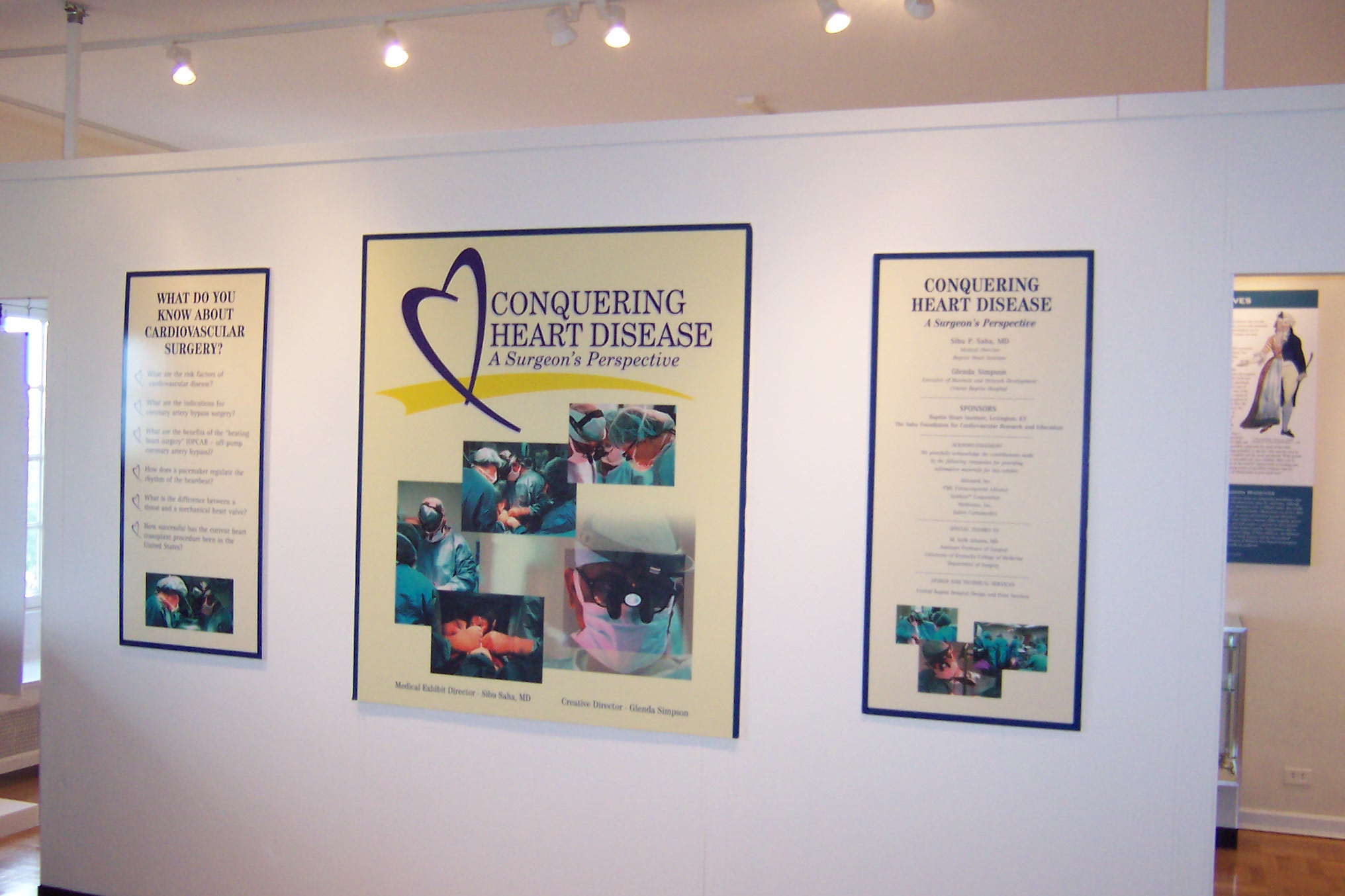
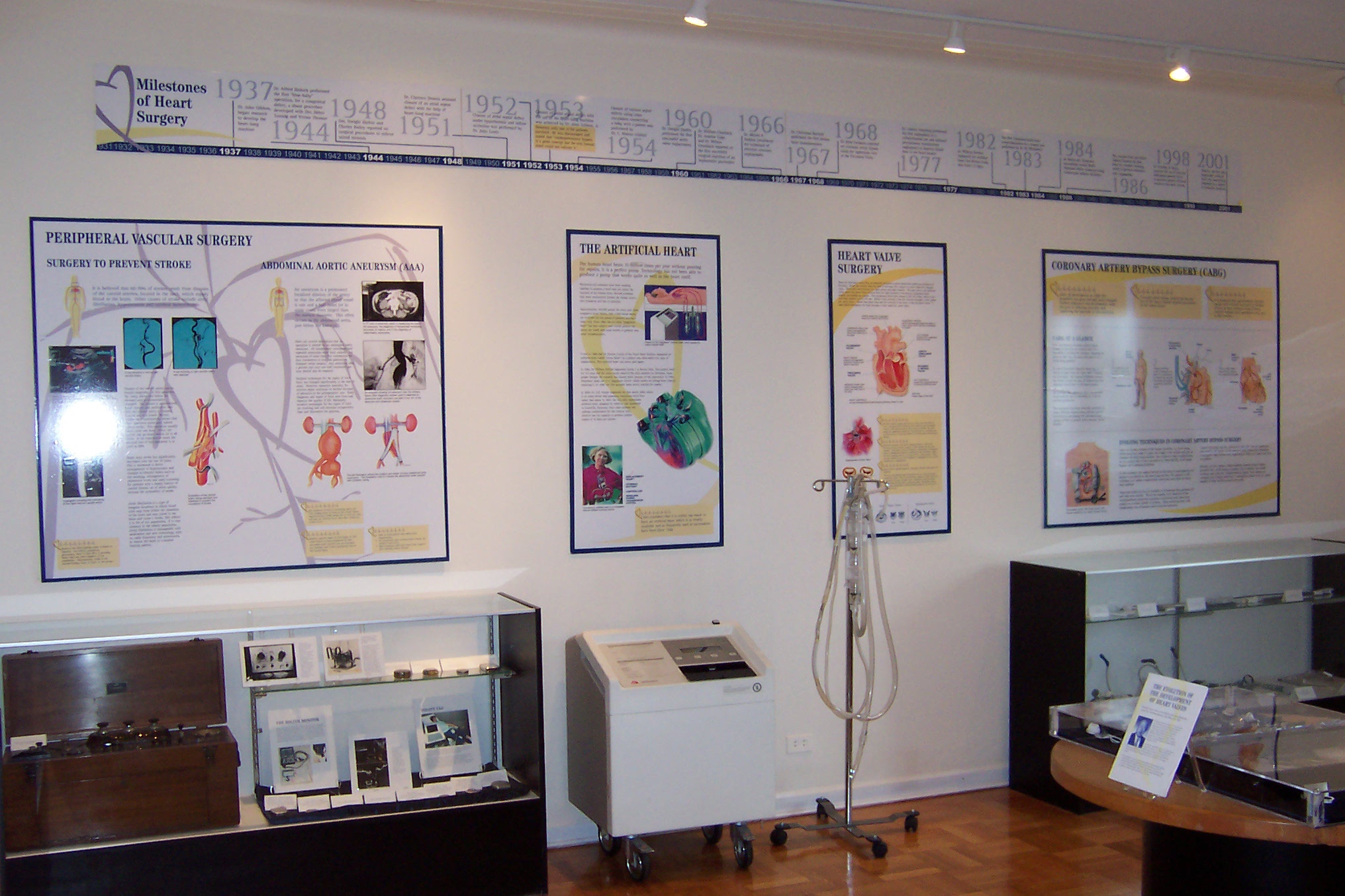
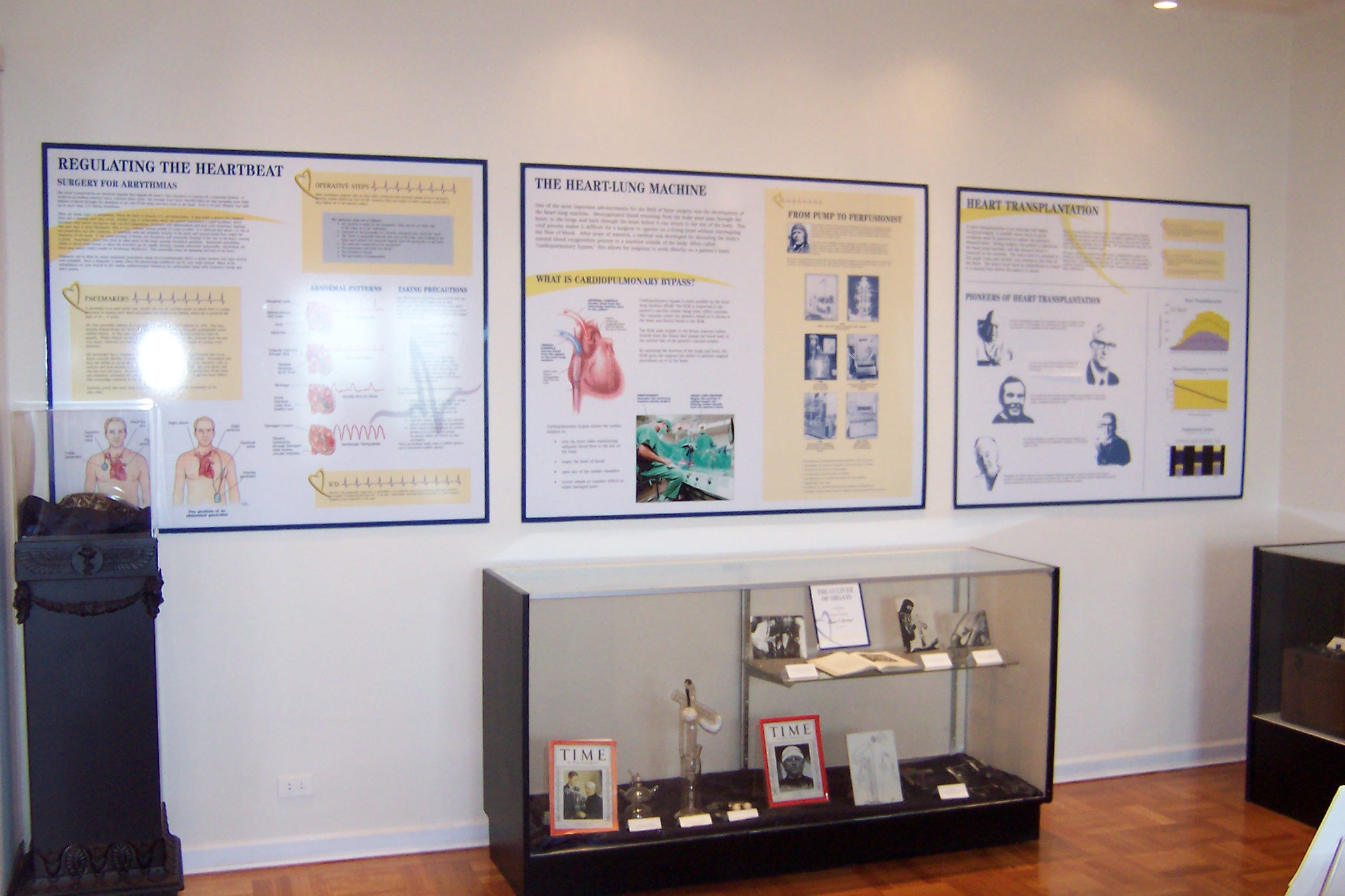
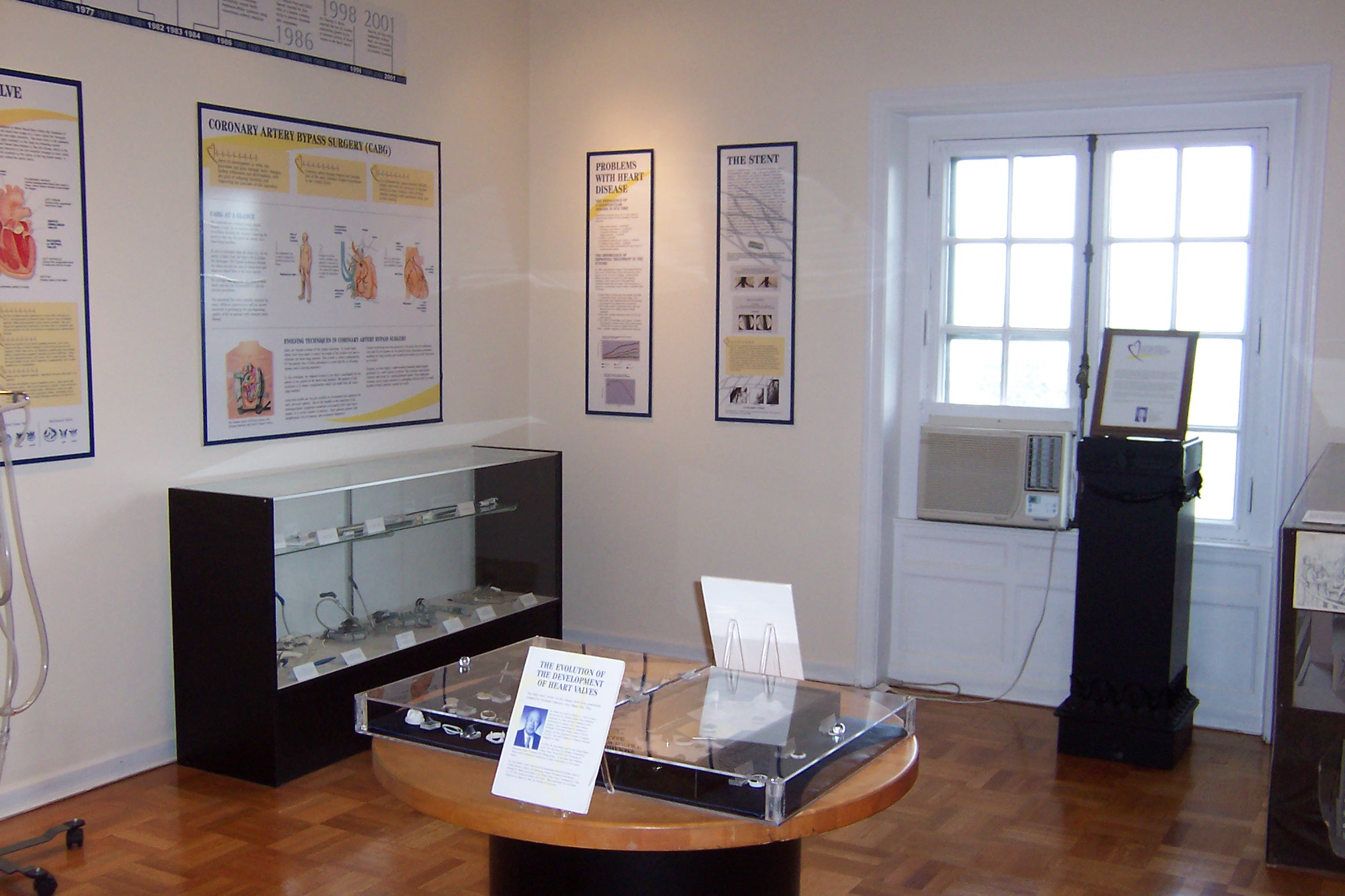
Cardiovascular disease surgery is a recent medical advancement of the 21st Century. The latter half of the 1900s has seen the development of many surgical procedures in the management of cardiovascular disease. These procedures have been possible because of the significant strides made in research and a better understanding of cardiovascular diseases, leading to new developments in techniques and technology.
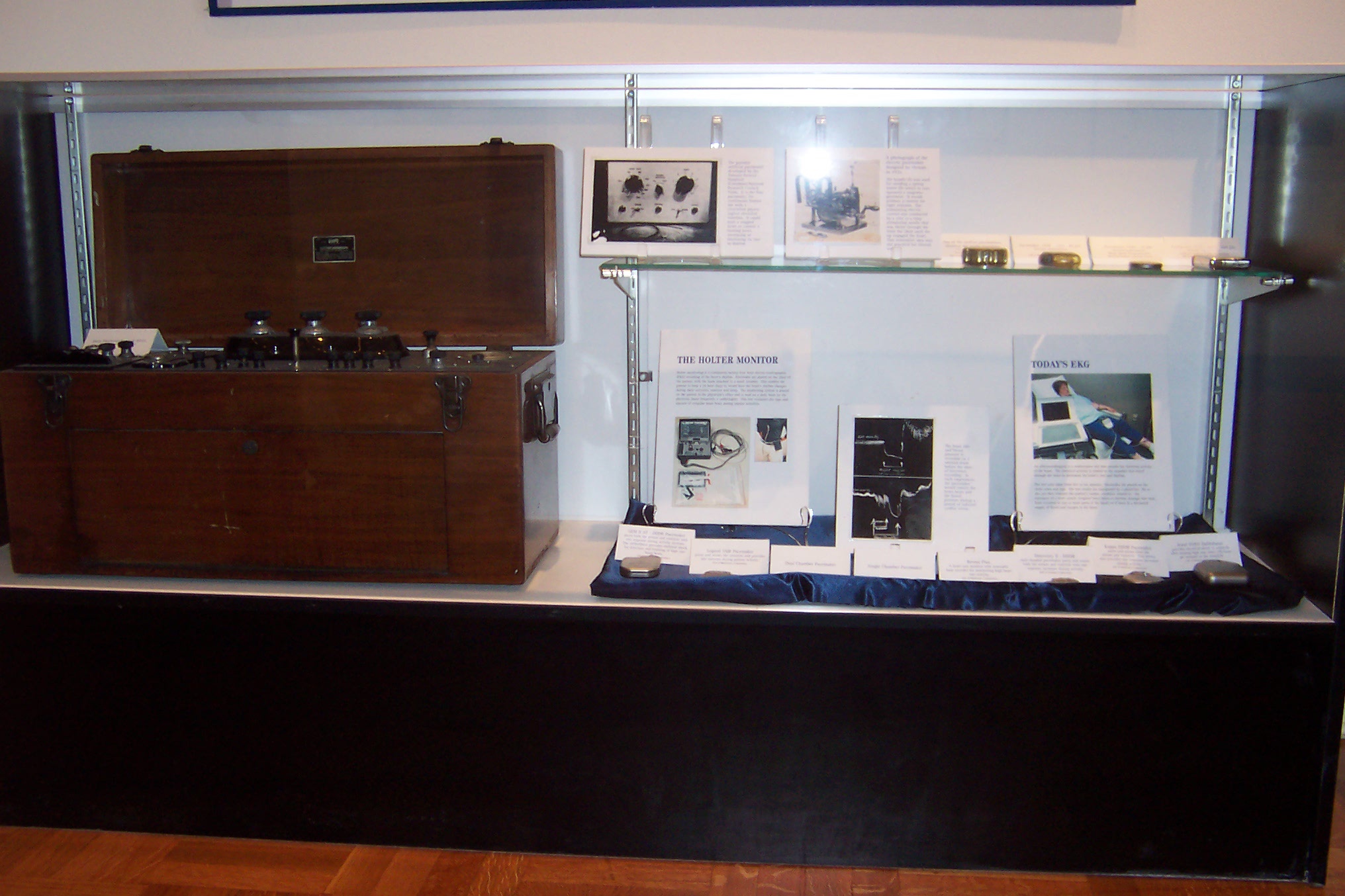
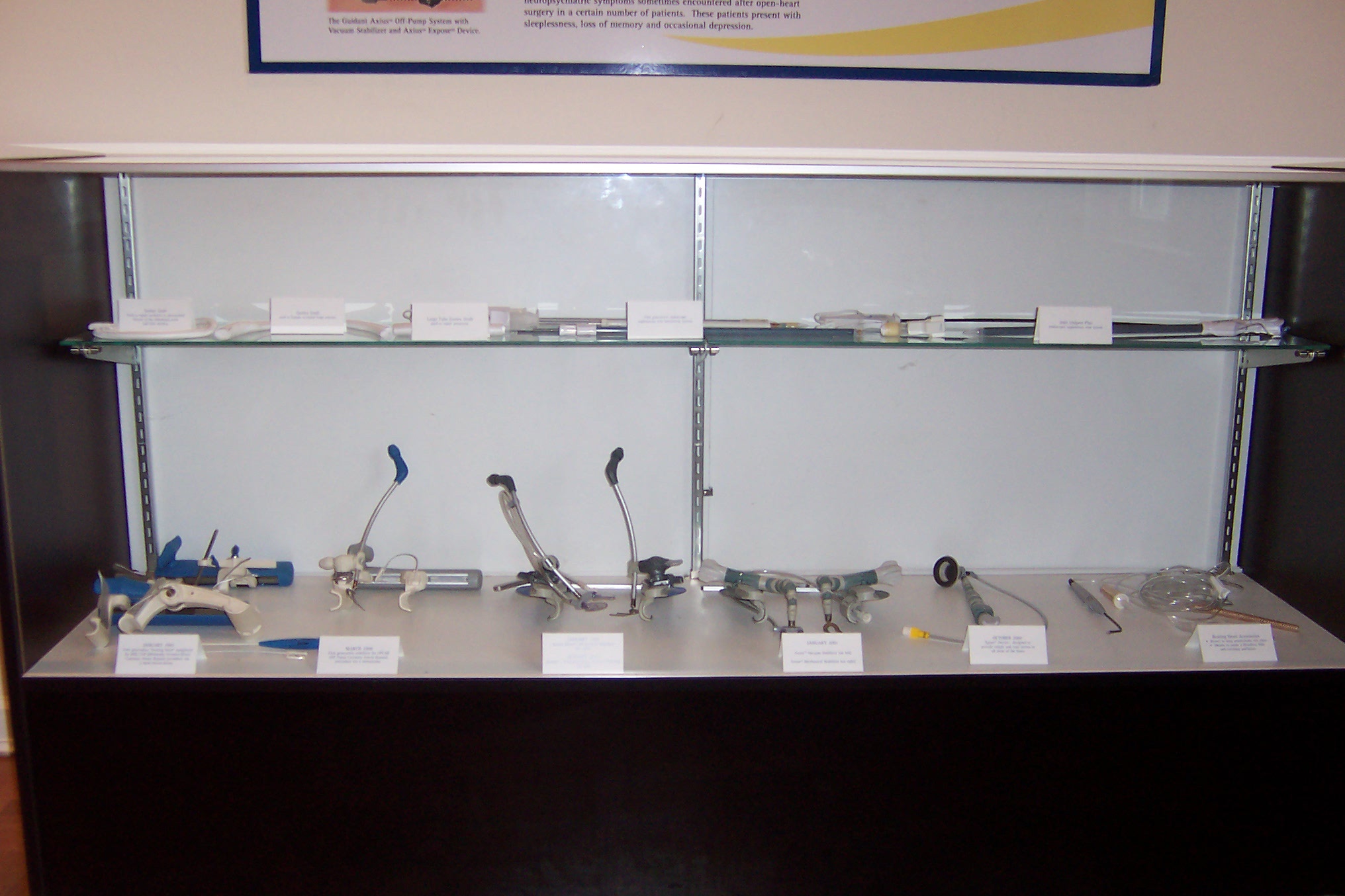
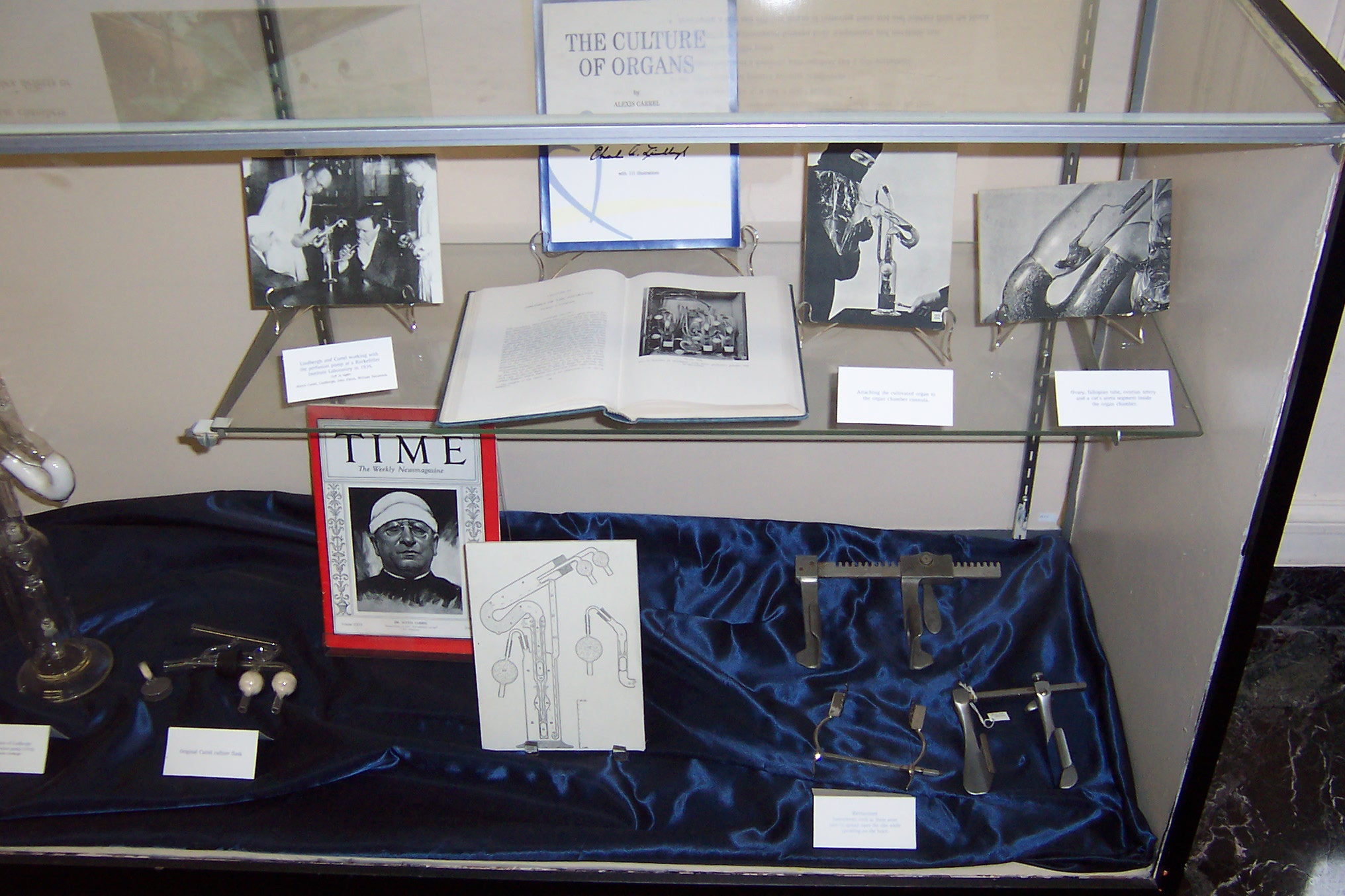

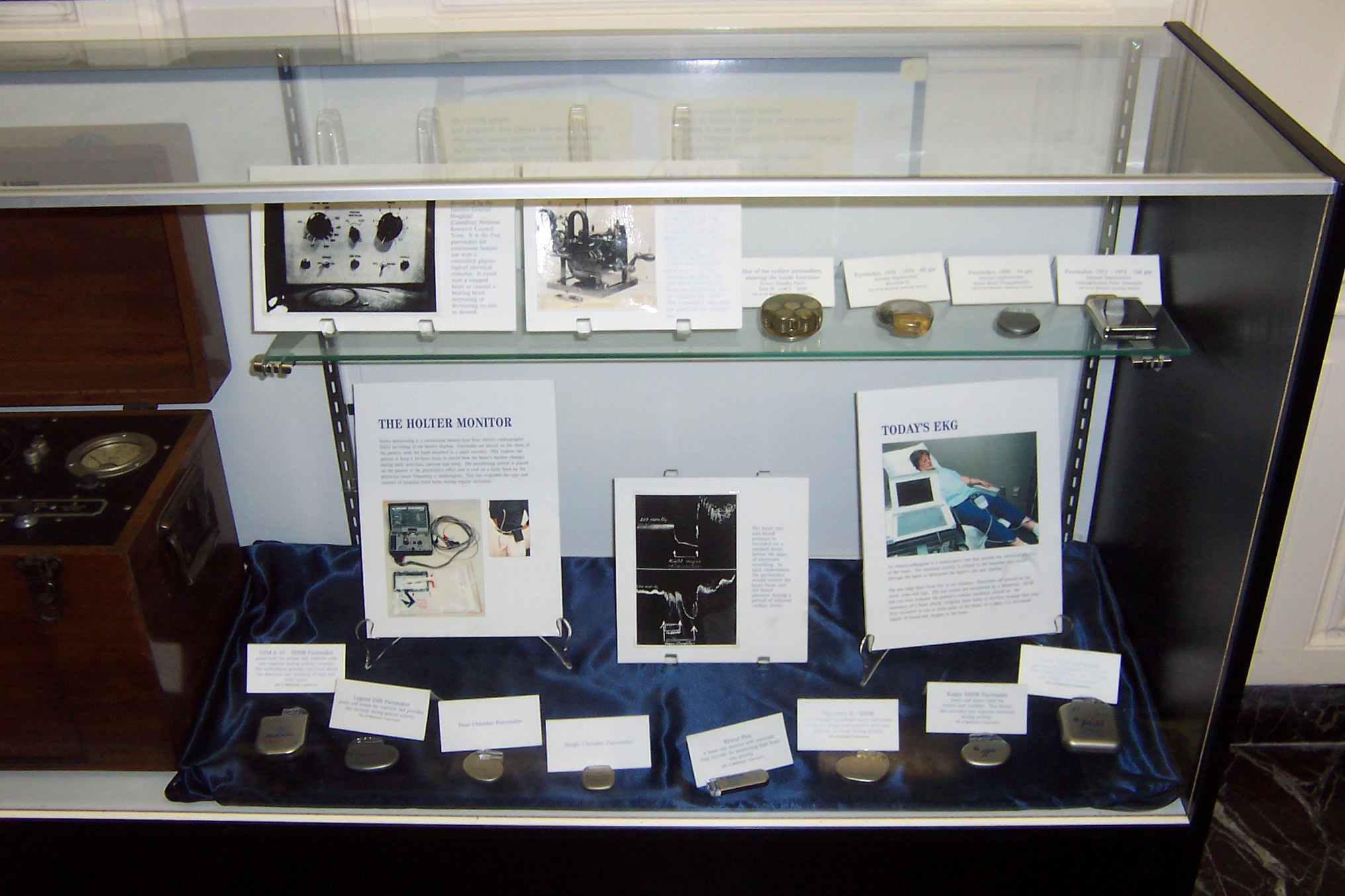
Conquering Heart Disease explained the state-of-the-art technology and history of cardiovascular surgery. Topics of interest included the pacemaker; preventative stroke surgery; abdominal aortic aneurysms; coronary artery bypass procedures; the heart/lung machine; stents; the artificial heart; and heart transplants. A collection of early heart valves, generously donated by Professor Emeritus Juro Wada, MD, PhD, were also found in the exhibit.
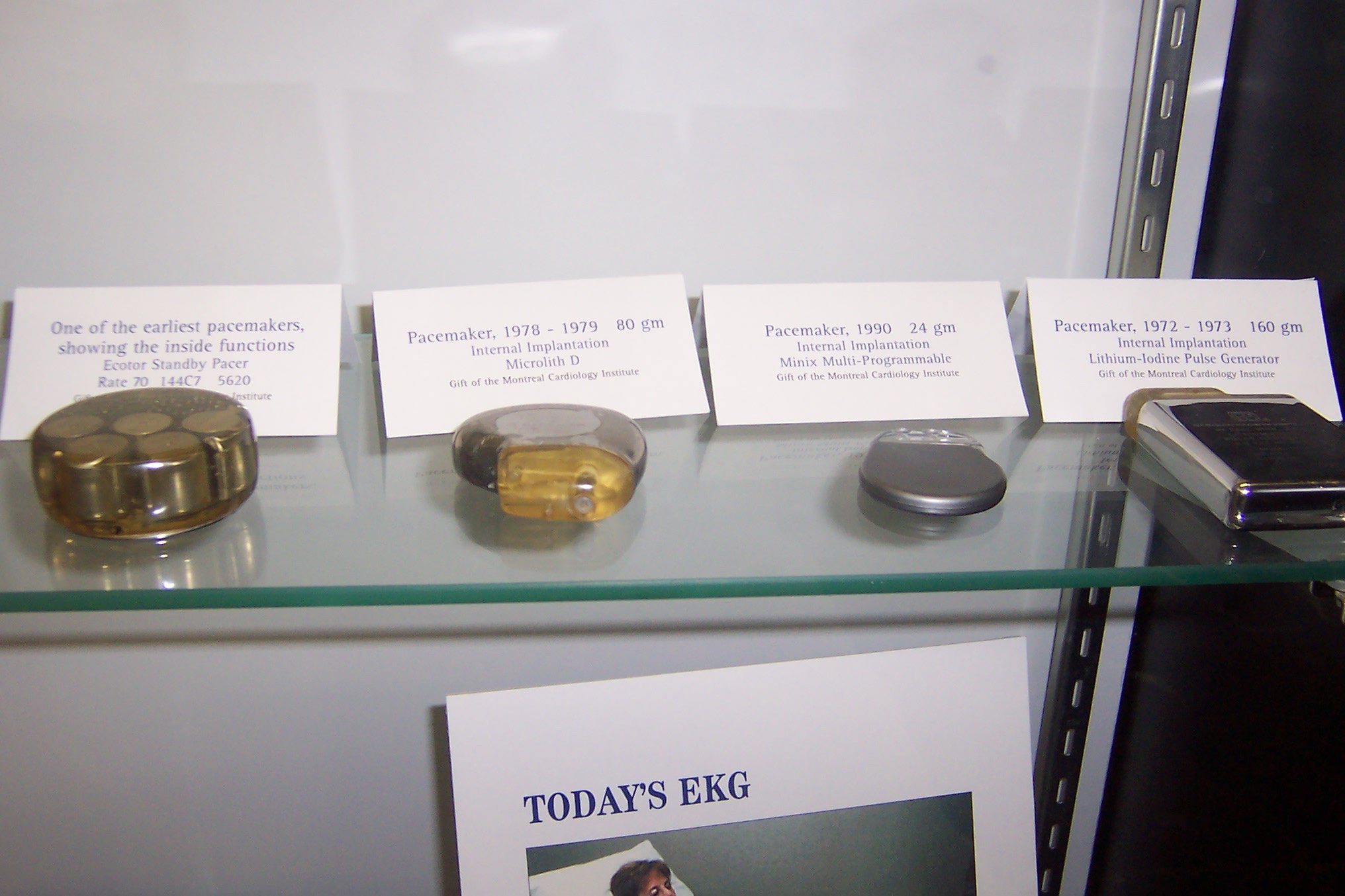
These early pacemakers date back to the 1970s. A cardiac pacemaker is a medical device that generates electrical impulses delivered by electrodes to cause the heart muscle chambers to contract and therefore pump blood. By doing so, this device replaces and/or regulates the function of the electrical conduction system of the heart.
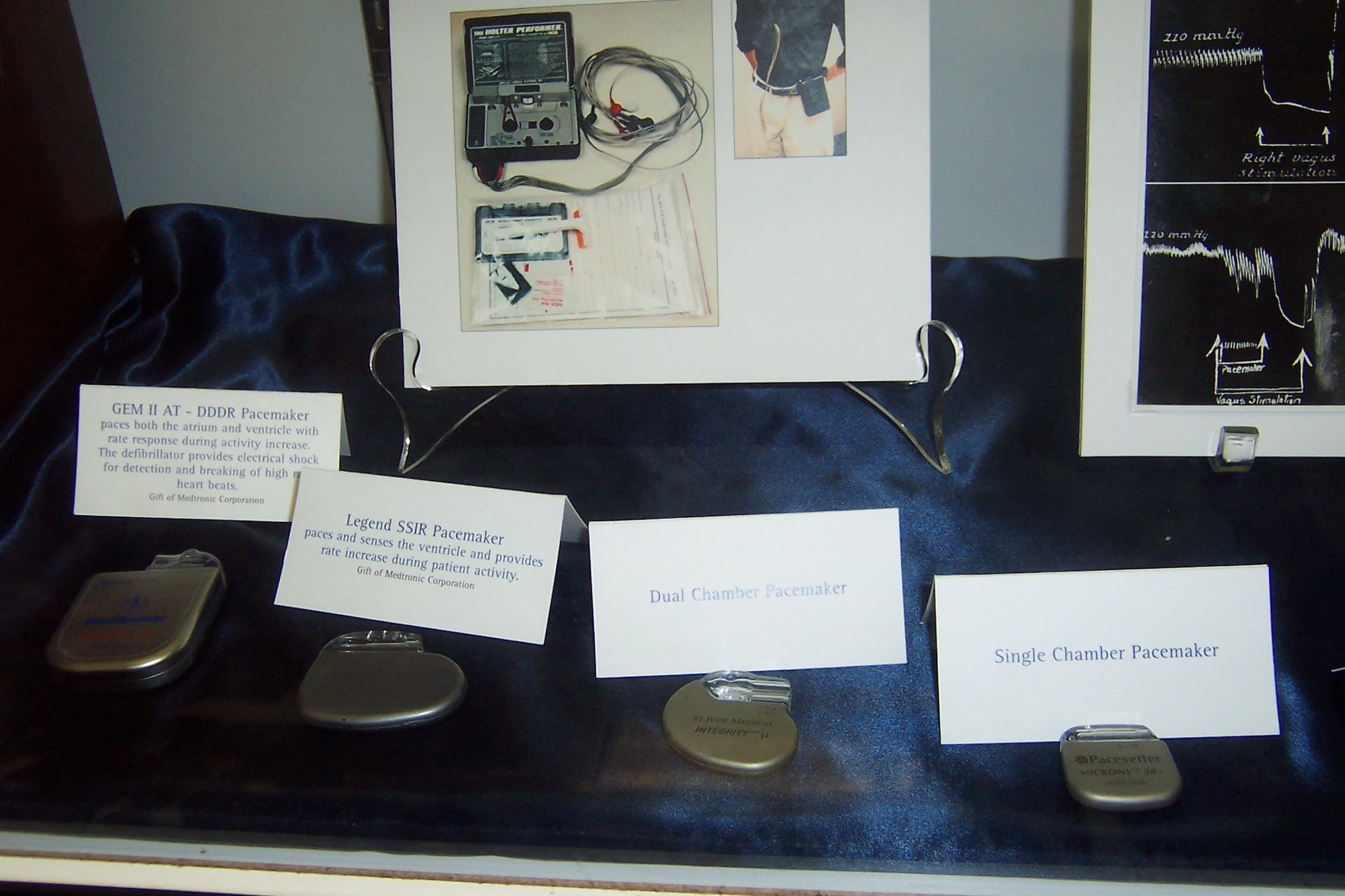
Shown here are varying types of early pacemakers: single chamber, dual chamber, SSIR and DDDR.
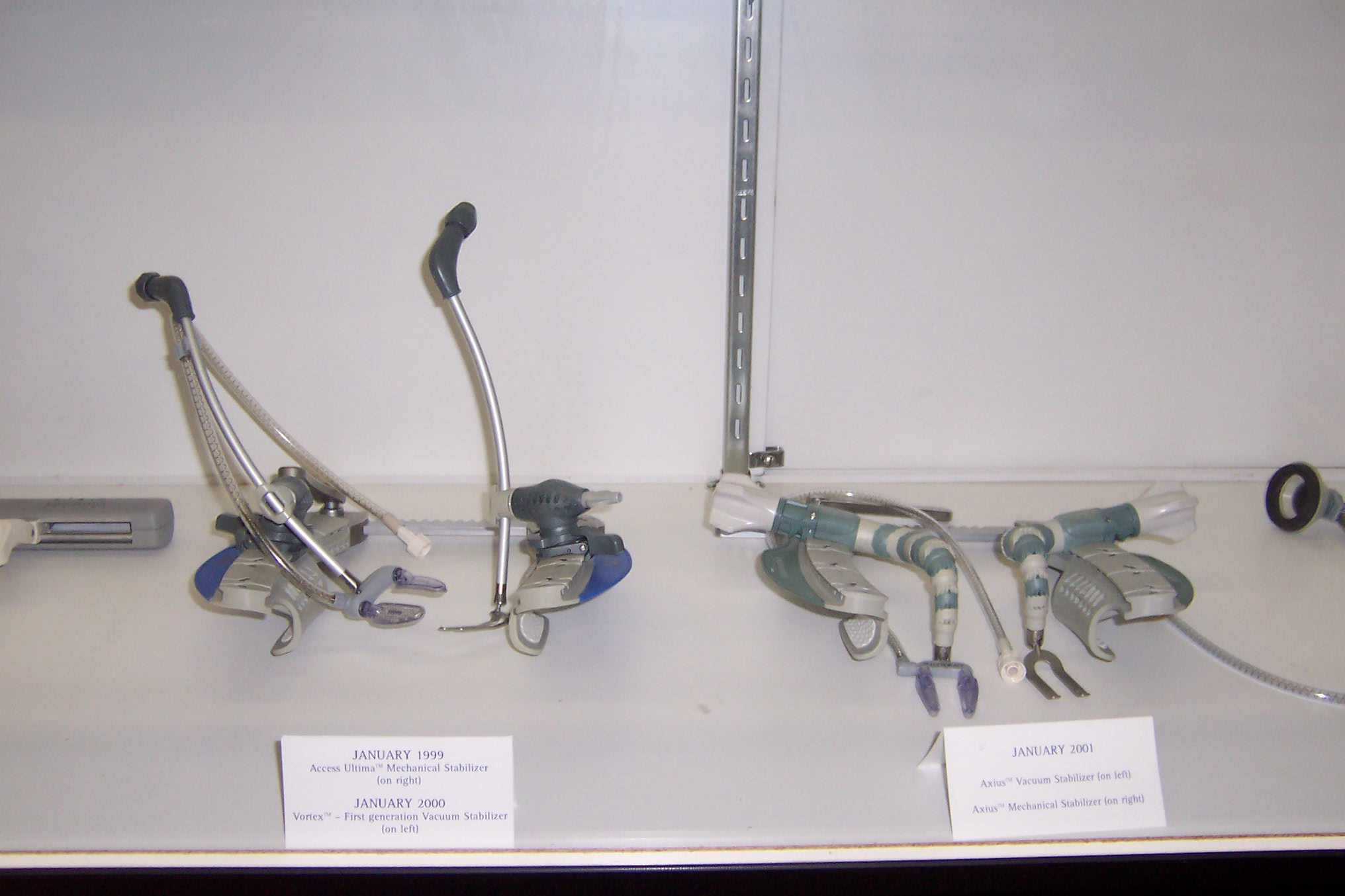
Vacuum and mechanical stabilizers provide local stabilization of a target vessel during off-pump coronary artery bypass.
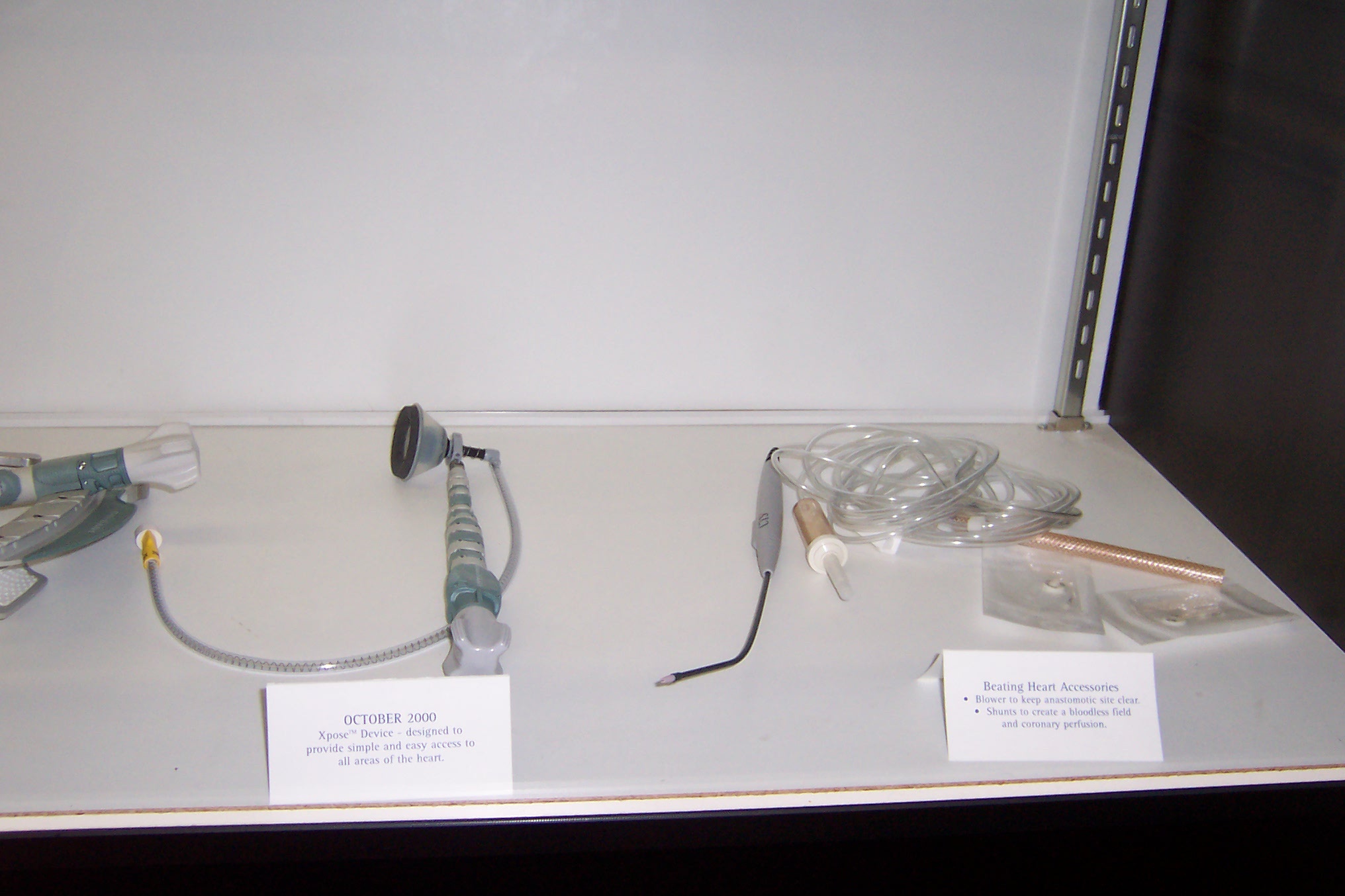
Shown here are devices for cardiac surgery, including shunts, a blower, and an Xpose device.
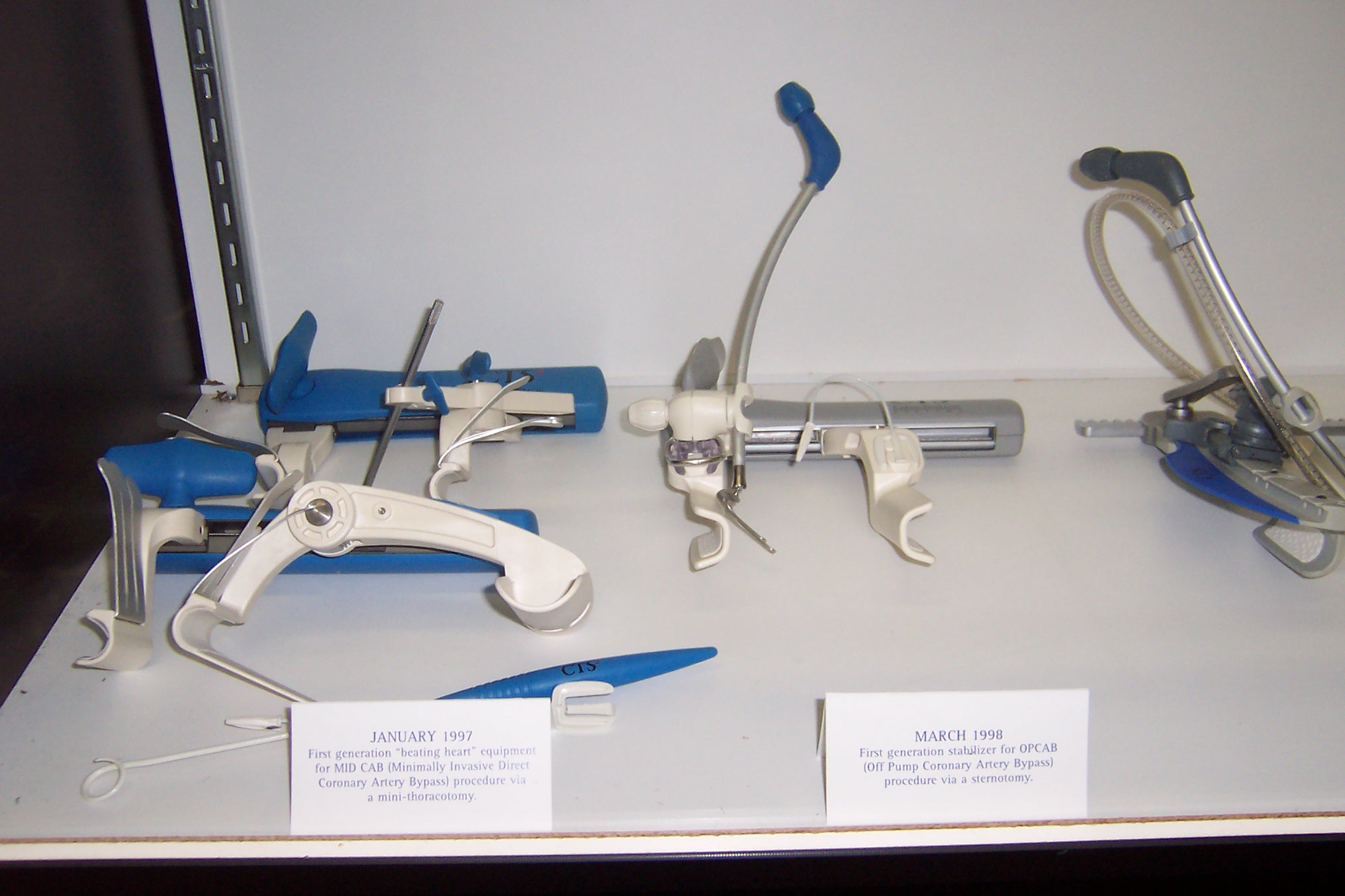
The device on the left is a first generation “beating heart,” used for minimally invasive direct coronary artery bypass.
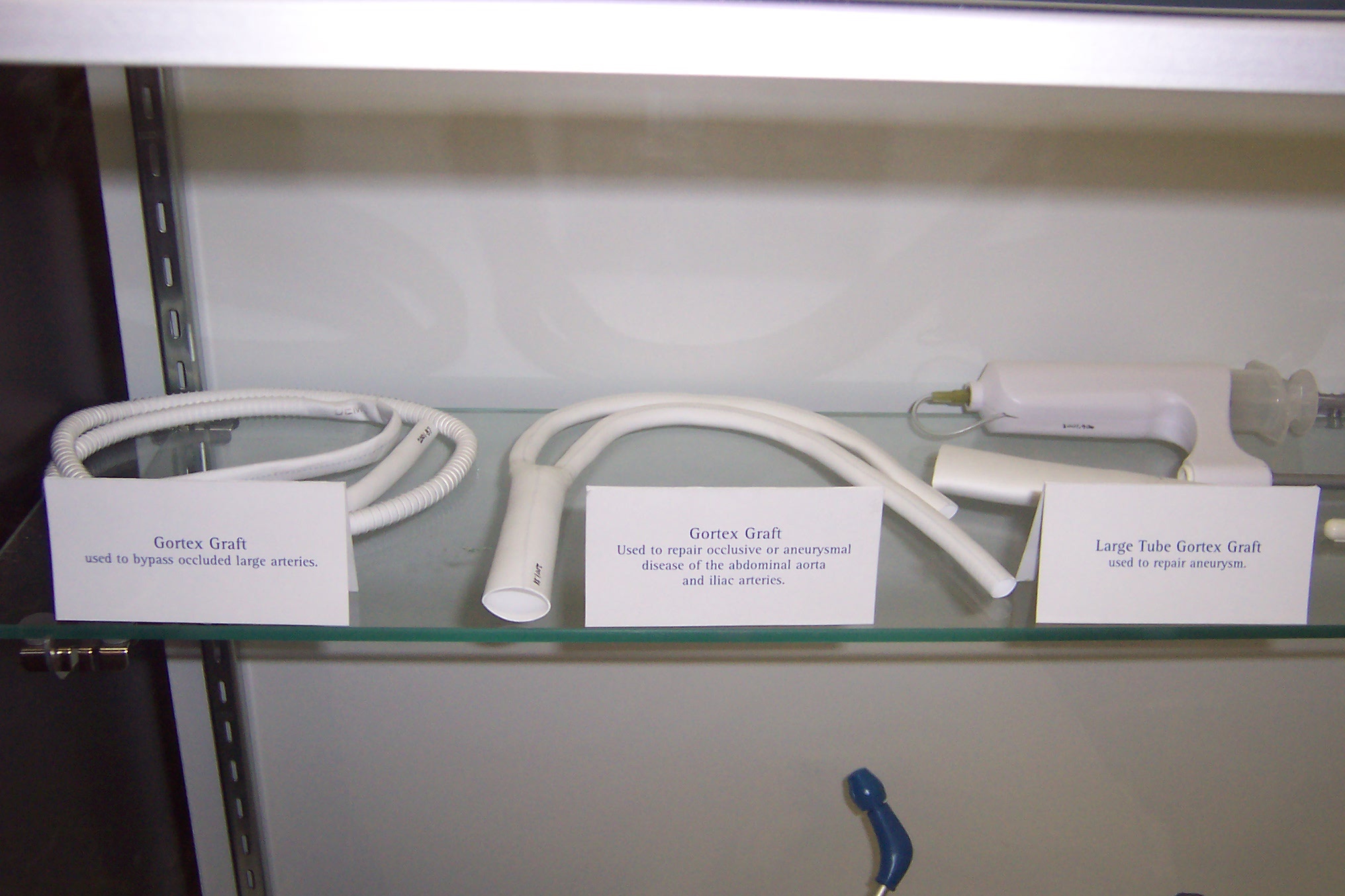
Pictured here are three Gortex grafts: one used to bypass an occluded large artery, one to repair occlusive or aneurysmal disease of the abdominal aorta and iliac arteries, and one used to repair aneurysms.
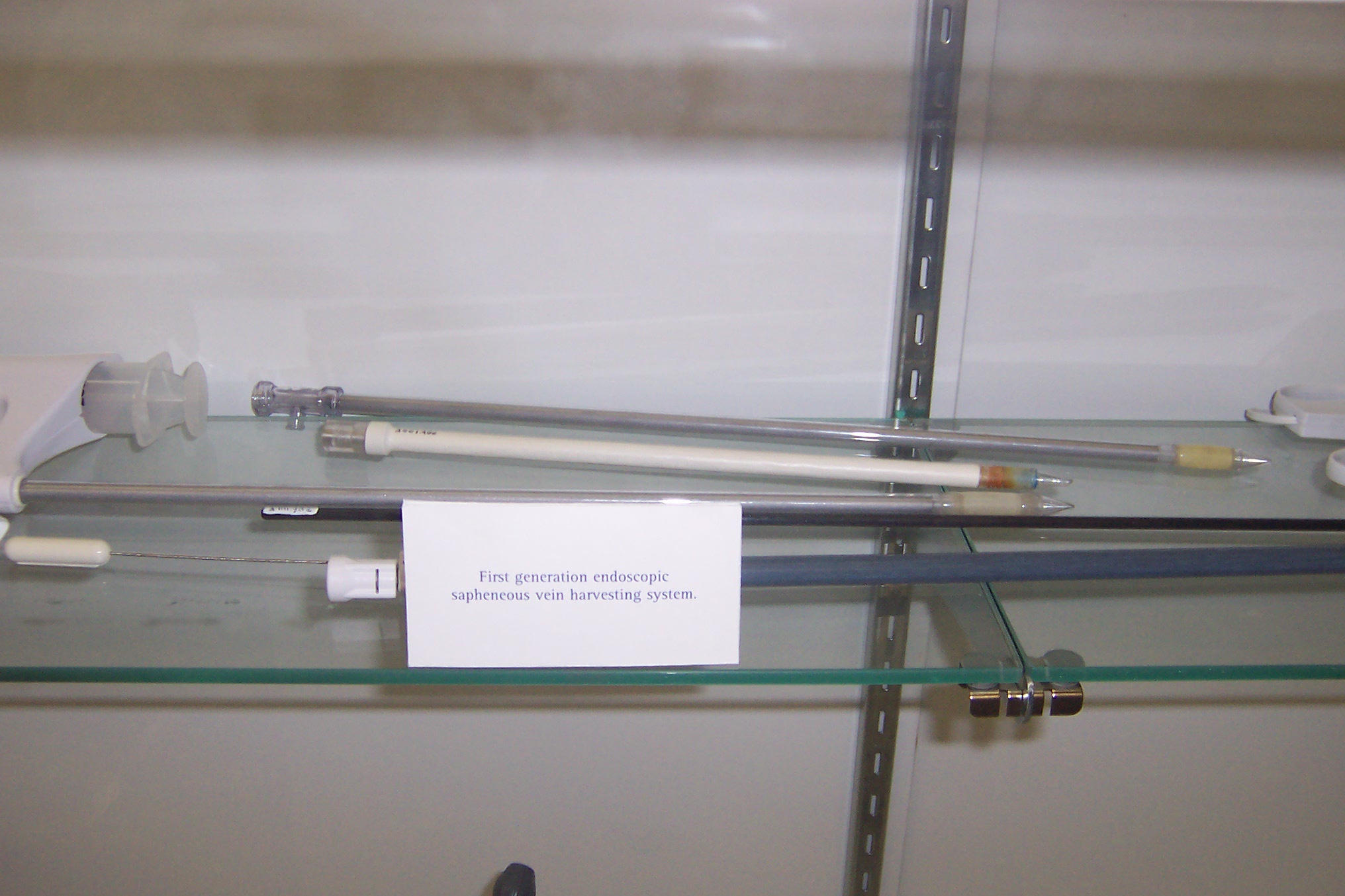
This is a first generation endoscopic saphenous vein graft harvesting system used in coronary artery bypass surgery.

This is a 2001 model endoscopic saphenous vein graft harvesting system used in coronary artery bypass surgery.
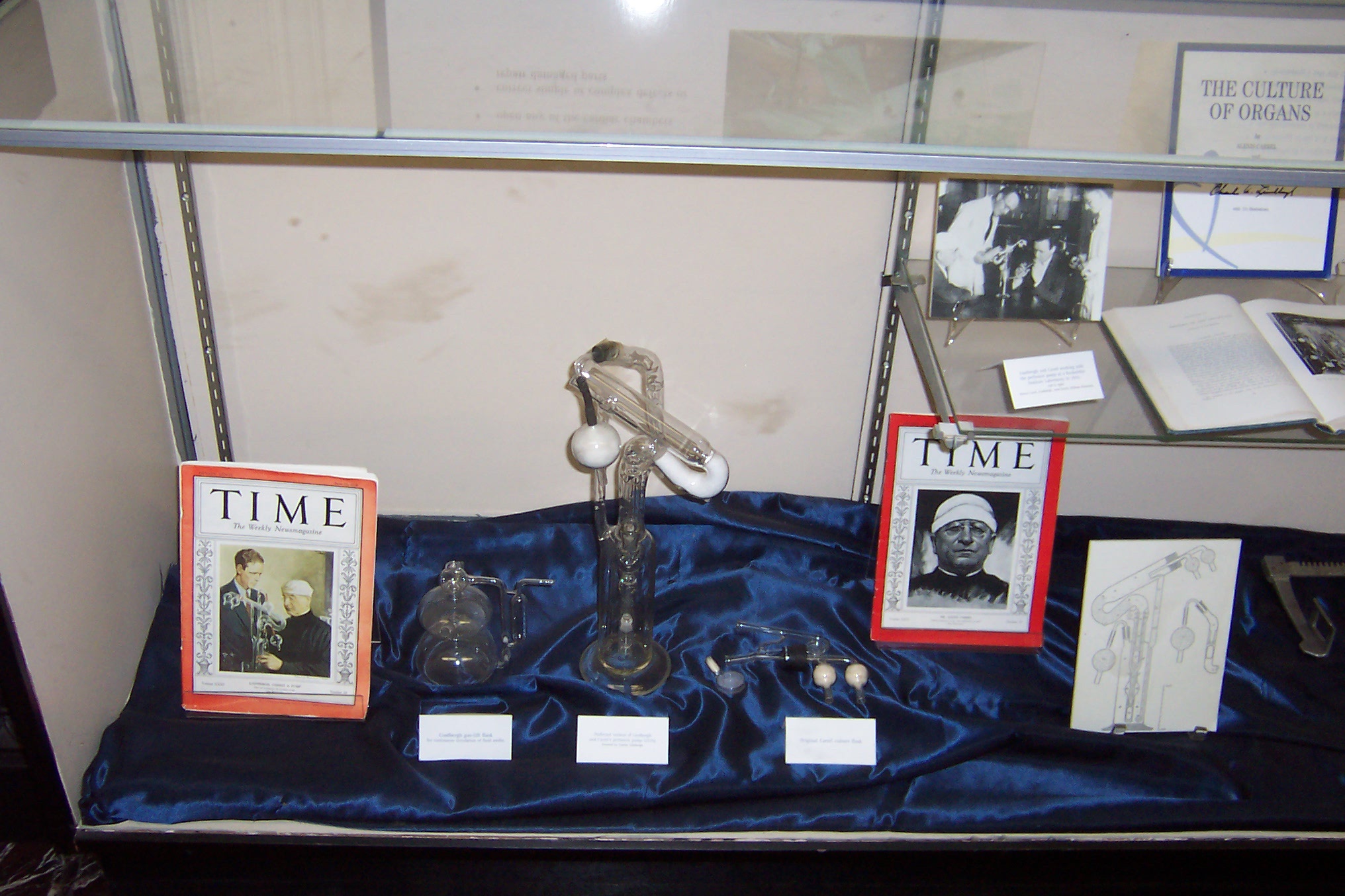
Included in the exhibition was a display featuring the Lindbergh-Carrel perfusion pump from 1935. The Lindbergh-Carrel Perfusion Pump maintains a pulsating flow of nutrient fluid through an aseptic pyrex container to keep organs viable outside the body; it is often considered to be a precursor of the heart-lung machine.
The pump was developed by the American aviator Charles Lindbergh, who made the first successful solo non-stop flight from New York to Paris in 1927, and the French surgeon and biologist Alexis Carrel, who won the Nobel Prize in 1912, at the Rockefeller Institute for Medical Research in New York.
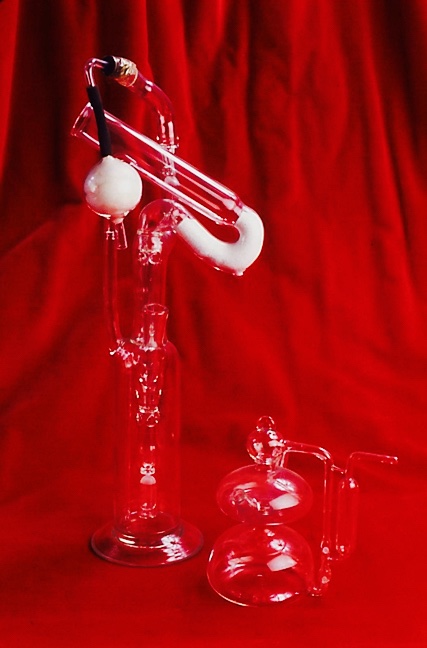
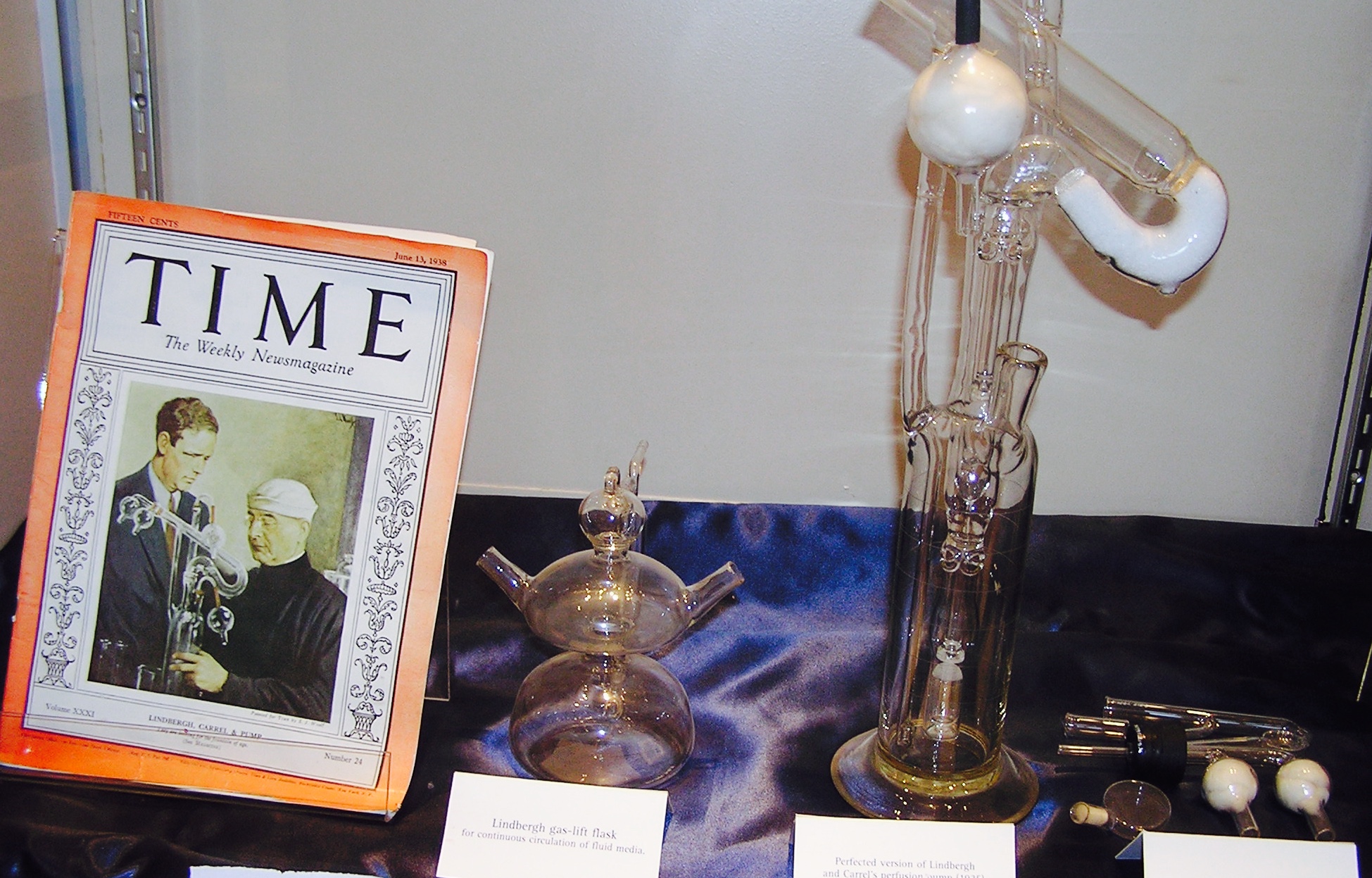
Lindbergh began working with Carrel—who was then conducting some of the earliest experiments with culturing tissue in the laboratory—at the Rockefeller Institute in early 1931 after learning that his sister-in-law had an inoperable heart condition. Lindbergh wondered why it was (at the time) impossible to perform surgery on the heart and devoted his engineering skills to creating a device that would enable the survival of organs outside the body. There is some debate about how much of the work Lindbergh did and whether Carrel was merely using his name for the sake of publicity. Paired with the Pump were covers of Time Weekly Newsmagazine, original Carrel culture flasks, and the joint publication, “The Culture of Organs.”
Conquering Heart Disease which opened in 2001, was organized by Dr. Sibu Saha, FICS and the Baptist Heart Institute of Lexington, Kentucky.
Michelle Rinard joined the Museum in 2016. Her interests include institutional history, house history, and museum sustainability.
